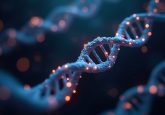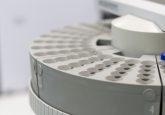Poster: Can the routine use of ion mobility in drug metabolism studies aid with the efficient and robust characterisation of drugs and their metabolites?

The ability to efficiently and robustly characterise drugs and metabolites during DMPK studies is a vital part of the drug development process. Current LC-MS systems, incorporating either high sensitivity triple quadrupole or high resolution instruments, already allow for rapid analysis with a high degree of selectivity, but uncertainty in the identification of drug-related components can still be encountered. Issues are more commonly observed during the analysis of complex matrices (e.g. bile, urine, faeces and plasma), samples containing a large number of closely eluting drug-related components or when analytes are present at a low abundance. Instruments that incorporate ion mobility provide an extra resolution step to the LC- MS process, in addition they allow CCS (collisional cross section) values to be generated. The Vion IMS Q-Tof instrument (Waters) enables drug metabolism
Download Poster Now
Find out more about Waters and their products here.






